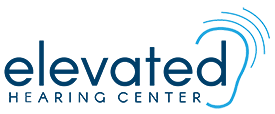
You already know you need hearing aids, so now what? Hearing aids are about to become an important part of your life, so finding the right type matters. There different kinds of hearing aids out there including some pretty flimsy ones available only on the Internet. It’s up to you to decide what you want from the device and how much you can afford to spend. What should you look for when investing in hearing aids?
Those Internet Knockoffs
Sure, they exist and they will help amplify sound, which is the basic function of hearing aids but that’s all they do. Modern, quality digital hearing aids combine different technologies to create a device customized to your needs. You can go cheap and buy one online but you will miss out on important features.
Internet hearing assistance devices are not really the bargain they seem to be, either. They don’t work very well or very efficiently. What you save on the device itself you lose by having to constantly replace the batteries and you will replace them a lot.
You need to see your new hearing aids for what they are – an investment in your future. Hearing impacts every aspect of your life so it’s not the place you want to look to save money. If you can’t afford quality hearing aids, there may be other ways to get them, so don’t settle for something that is less than what you really need.
Call Today to Set Up an Appointment
Analog Vs. Digital
It’s likely all of the hearing aids you find at quality retailers will be digital. It’s important to know analog devices are out there, though, and to understand the difference. Analog refers to the type of signal the hearing aid gets and the quality. With analog hearing aids, the quality of the sound isn’t consistent.
Digital hearing aids deliver better quality sound that is more reliable. If you run across analog hearing aids, move on and look at the digital units, instead.
Consider the Styles
When you start researching hearing aids, you’ll see there are many styles available. That is good news because it means there is definitely a style that will work for you. The various styles of hearing aids include:
- Behind-the-Ear (BTE)
- In-the-Ear (ITE)
- In-the-Canal (ITC)
- Receiver-in-the-Canal (RIC)
- Receiver-in-the-Ear (RIE)
- Open Fit
The names offer a pretty good definition of each. BTE hearing aids consist of a piece that sits behind the ear. It connects to clear tubing and an earmold that rests at the opening of the ear canal.
On the other hand, ITE pieces sit, you guessed it, in the ear. The device is at the opening of the ear canal and is just one unit. There is nothing behind the ear. ITC devices are very similar but go deeper into the ear, making them less visible.
RIC and RIE, as the name suggests, have receiver pieces that sit in the ear and then connect by a wire to a piece behind it. Both styles tend to be less conspicuous than BTE hearing aids.
Finally, open fit units are BTE devices except instead of connecting to an earmold, a thin tube goes into the ear canal. This format works well for anyone who doesn’t like the feel of something stuck in their ear.
Call Today to Set Up an Appointment
Finding The Perfect Features
There are really two sides to hearing aid shopping: style and features. You want a comfortable style that offers features that make your life easier. Some common features to consider include:
- Noise reduction
- Directional microphones
- Rechargeable batteries
- Telecoils
- Wireless connectivity
- Remote controls
- Direct audio input
- Variable programming
- Environmental noise control
- Synchronization
- Bluetooth
Your job is to look at each of these options and figure out which ones matter the most to you. For example, Bluetooth is a great function to have especially if you talk on your smartphone or computer a lot. Rechargeable batteries save you money on replacement batteries and telecoil is good if you have to listen to lectures or seminars a lot.
Call Today to Set Up an Appointment
Finally, Consider Your Buying Options
You want to purchase your hearing aids from a qualified retailer, one that custom fits the devices and offers a free trial period. The truth is when it comes to hearing aids, you don’t always know what you don’t know, so having the opportunity to wear them for a while helps.
You also want to look closely at the warranty that comes with the hearing aids. What does it cover? Some pay only for replacement parts, some cover the labor, as well, and what about a new hearing aid if something goes wrong?
Before buying hearing aids make sure to get a full ear checkup and professional hearing test, too. There are many reasons you might notice a change in your hearing and they don’t all require hearing aids.
